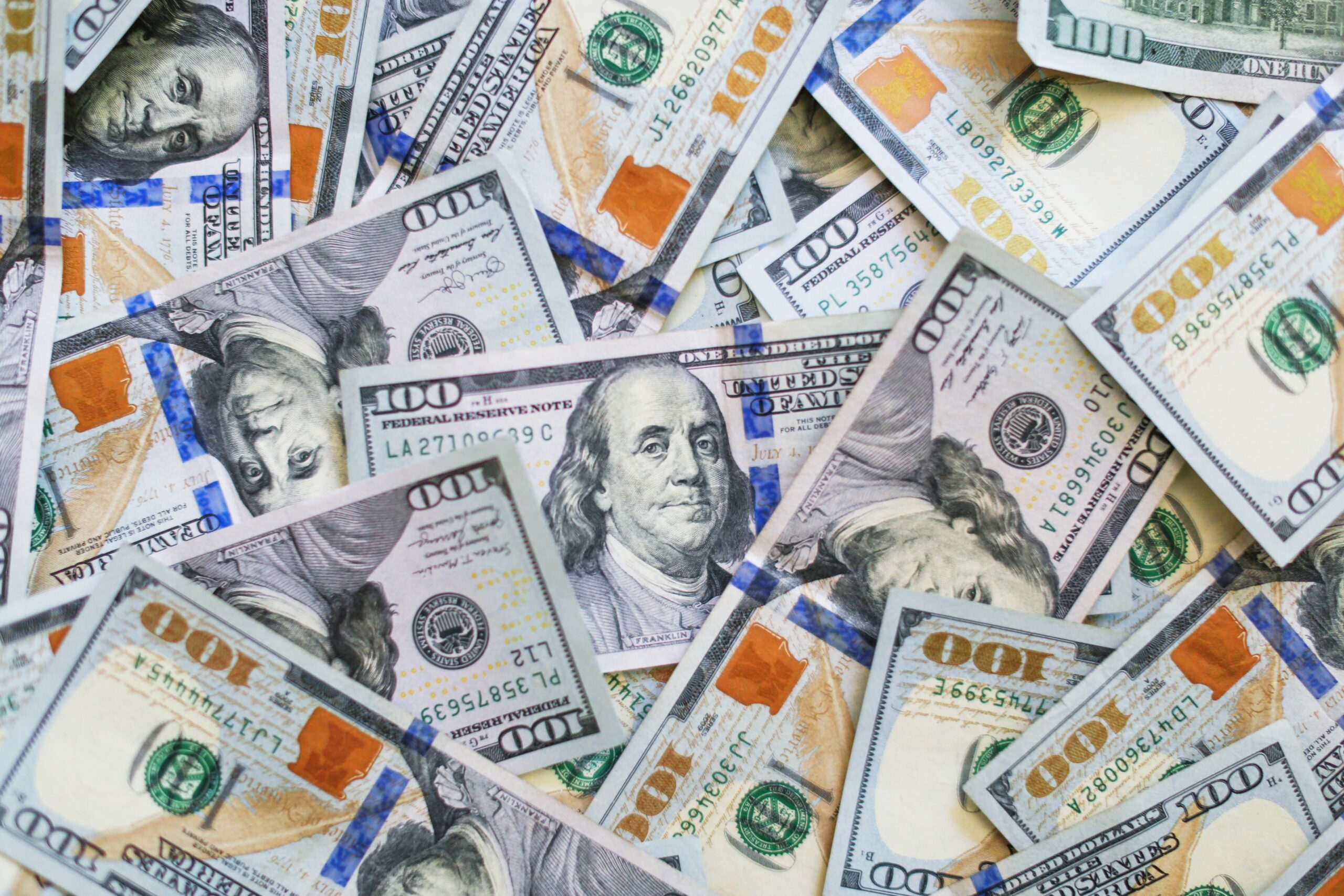Summary: Why is the US dollar the standard?
The US truly rose to prominence in the first half of the 20th century. Its military prowess was on fully display during World War I, backed by a domestic economy that emerged relatively unscathed as Western Europe struggled to rebuild. By the end of World War II, established as the preeminent economic superpower, the US dollar replaced the British pound as the primary global reserve currency. Fast forward to today, the USD is far and away the most commonly used currency in international trade.
The view looks good from the top.
The US market currently represents about 60% of the total value of all global equities. This is advantageous for individuals and businesses who receive their income in American dollars, as they don’t need to worry about currency fluctuations or engage in hedging strategies when purchasing US stocks.
The US dollar has also strengthened in 2023, allowing the United States to partially “outsource” pervasive inflation problems. When importing goods from other countries, a stronger currency is helpful because you purchase the exporting country’s currency and then use that currency to pay for the goods. If the USD appreciates relative to, say, the euro, then it costs less in USD to purchase exports from the Eurozone. This is one of the reasons why inflation in the US has cooled more so than in other countries.
What risks does the US dollar face?
There is a concept called the Lindy Effect, popularized by mathematician Benoit Mandelbroit, that loosely states that the longer a non-perishable item has existed, the longer it can be expected to continue to exist in the future. The US dollar is approaching the end of its eighth decade as the primary global reserve currency. It won’t last forever (nothing does), but its longevity alone would imply its likelihood to endure into the future.
The US dollar has faced some scares. Until 1971, it was pegged to gold. When Nixon removed it from the gold standard, there was widespread fear of currency debasement. Without the gold peg, some surmised that money was only worth the paper it was printed on. Well, it turns out being backed by the full faith and credit of the US government is more important than being exchangeable for shiny yellow metal.
Fast forward to 2021 when crypto prices were screaming higher, partially fuelled by concerns of runaway inflation. For some, collapse of the USD seemed imminent; it was just a matter of which cryptocurrency would emerge as dominant and the degree to which governments would control it.
I’ve written previously about cryptocurrencies and the technology that allows them to function (but suffice to say that the current iteration of crypto lacks some of the features necessary for the day-to-day commercial transactions of a centralized currency). For one, relative stability in exchange rates is important. Cryptocurrencies like bitcoin saw their prices rise because they were primarily viewed as investments, not a medium of exchange. If I thought that bitcoin could be worth 10% or 20% more next week, why would I want to use it to buy pizza (for a funny story on buying pizza with Bitcoin, click here) or a couch today? And If I’m a seller looking to fulfill contracts, how will I feel about agreeing to a price for a job to be completed later when the currency I’m being paid in could fall 50% over a couple of months? It’s about as logical as using Tesla stock as a form of currency.
US dollar strength hasn’t been questioned nearly as much in 2023. Supported by interest rate differentials and a flight to safety, the USD has appreciated materially versus its global counterparts. It will soften again, likely as the global economy rebounds. However, as is human nature, we tend to hyperbolize. Mark Twain, in response to false reports that he had passed away, was quoted as saying: “The reports of my death have been greatly exaggerated”. The US dollar could say the same.
Opinions are those of the author and may not reflect those of BMO Private Investment Counsel Inc., and are not intended to provide investment, tax, accounting or legal advice. The information and opinions contained herein have been compiled from sources believed reliable but no representation or warranty, express or implied, is made as to their accuracy or completeness and neither the author nor BMO Private Investment Counsel Inc. shall be liable for any errors, omissions or delays in content, or for any actions taken in reliance. BMO Private Investment Counsel Inc. is a wholly-owned subsidiary of Bank of Montreal.

